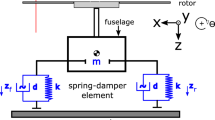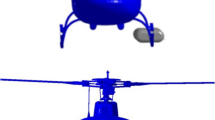Abstract
The ‘Altra Sede’ Tower is one of the most recent buildings in Milan, but it has already become one of the strongest features of the city skyline. On 22 January 2010, an opening ceremony dedicated the skyscraper to the citizenship as the base of the ‘Regione Lombardia’ government. A helicopter landing surface was built for institutional use beside the main tower and the adjacent buildings. This paper deals with the dynamic testing of this surface, describing all the steps followed to identify the main vibration modes in the vertical and horizontal directions. Two different forcing systems are employed and the results from the forced response, experimental modal analysis are compared to the ones obtained via operational modal analysis, leaving the same sensors in place for a few days and continuously measuring the ambient vibrations. The obtained results describe the surface dynamic behavior in the range 0–10 Hz. All the resonant frequencies and the associated mode shapes are correctly identified. This modal parameter set is the reference to which future measurements should be compared, to perform a structural health-monitoring campaign on the surface.
















Similar content being viewed by others
References
Brownjohn JMW (2007) Structural health monitoring of civil infrastructure. Philos Trans A Math Phys Eng Sci 365(1851):589–622
Doebling SW, Farrar CR, Prime MB (1996) Damage identification and health monitoring of structural and mechanical systems from changes in their vibration characteristics: a literature review”. Los Alamos National Laboratory report LA-13070-MS
Sohn H, Farrar CR, Hemez F, Czarnecki J (2002) A review of structural health monitoring literature 1996–2001, in third world conference on structural control, pp 1–7
Doebling SW, Farrar CR, Prime MB (1998) A summary review of vibration-based damage identification methods. Shock Vib Dig 30(2):91–105
Carden EP (2004) Vibration based condition monitoring: a Review. Struct Heal Monit 3(4):355–377
Fan W, Qiao P (2010) Vibration-based damage identification methods: a review and comparative study. Struct Heal Monit 10(1):83–111
Reynolds P, Pavic A, Carr J (2007) Experimental dynamic analysis of the Kingston communications stadium. Struct Eng 85(8):33–39
Peeters B, De Roeck G (2001) Stochastic system identification for operational modal analysis: a review. J Dyn Syst Meas Control 123(4):659
Cigada A, Manzoni S, Vanali M (2008) Vibro-acoustic characterization of railway wheels. Appl Acoust 69(6):530–545
Ewins DJ (2000) Modal testing: theory, practice and application (mechanical engineering research studies: engineering dynamics series). Wiley, Hoboken
Caprioli A, Cigada A (2006) Comparison between different operational modal analysis techniques for the identification of large civil structure modal parameters. In: Proceedings of modal analysis of conference
Cornwell P, Farrar CR, Doebling SW, Sohn H (1999) Environmental variability of modal properties. Exp Tech 23(6):45–48
Mohanty P, Rixen DJ (2004) Operational modal analysis in the presence of harmonic excitation. J Sound Vib 270(1–2):93–109
Huth O, Feltrin G, Maeck J, Kilic N, Motavalli M (2005) Damage identification using modal data: experiences on a prestressed concrete bridge. J Struct Eng 131(12):1898
Cigada A, Caprioli A, Redaelli M, Vanali M (2008) Vibration testing at Meazza stadium: reliability of operational modal analysis to health monitoring purposes. J Perform Constr Facil 22(4):228
Cigada A, Moschioni G, Vanali M, Caprioli A (2010) The measurement network of the San Siro Meazza Stadium in Milan: origin and implementation of a new data acquisition strategy for structural health monitoring. Exp Tech 34(1):70–81
Bart P, Van der Herman A, Patrick G (2004) The PolyMAX frequency-domain method: a new standard for modal parameter estimation? Shock Vib 11(3–4):395–409
Farrar CR, James GH III (1997) System identification from ambient vibration measurements on a bridge. J Sound Vib 205(1):1–18
Brincker R, Zhang L, Andersen P (2001) Modal identification of output-only systems using frequency domain decomposition. Smart Mater Struct 10(3):441–445
Peeters B, Patrick G, Van der Herman A, Bart C, Peter V (2004) Automotive and aerospace applications of the PolyMAX modal parameter estimation method. In: Proceedings of IMAC-XXII conference and exposition on structural dynamics
Peeters B, Lowet G, der Herman VA, Jan L (2004) A new procedure for modal parameter estimation. Sound Vib 38(1):24–29
Author information
Authors and Affiliations
Corresponding author
Rights and permissions
About this article
Cite this article
Busca, G., Cigada, A., Mola, E. et al. Dynamic testing of a helicopter landing pad: comparison between operational and experimental approach. J Civil Struct Health Monit 4, 133–147 (2014). https://doi.org/10.1007/s13349-013-0069-9
Received:
Revised:
Accepted:
Published:
Issue Date:
DOI: https://doi.org/10.1007/s13349-013-0069-9




